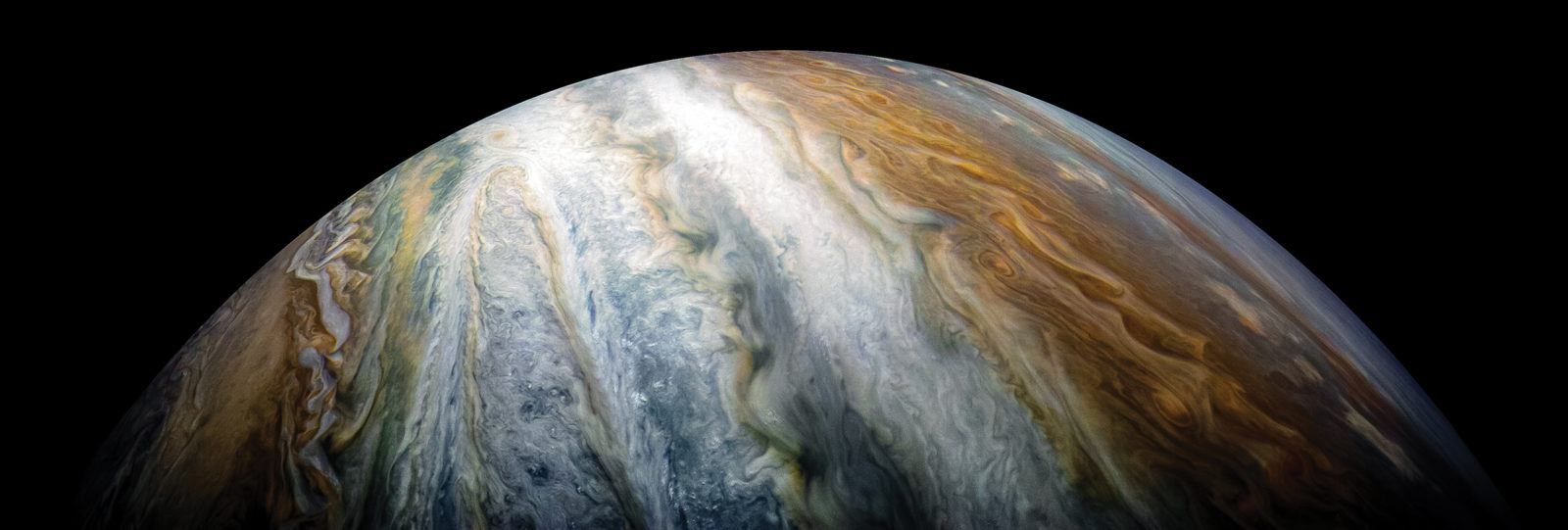I hear NASA has learned a bunch of new information about Jupiter’s famous Great Red Spot. What’s the latest? —Sam, San Francisco
By Jove, Sam, I’m happy to answer that question. The Greeks and Romans named the celestial orbs they gazed upon after gods and goddesses, so it makes perfect sense our solar system’s largest planet, Jupiter, has the moniker of their supreme god of the sky. In fact, Jupiter is twice as big as the seven other planets combined. In 2011, NASA launched a satellite called Juno, which incidentally is the Roman name for the wife of Jupiter, to probe the mysteries of this giant gaseous planet. And since July 4, 2016, the satellite has been traveling in an elliptical, 53-Earth-day orbit about 62,800 miles above Jupiter’s clouds, sending scientists new glimpses into the planet’s mysteries, including that Giant Red Spot (GRS).
Jupiter’s chemical constitution is about the same as the primordial soup that formed the rest of the solar system—90 percent hydrogen and 10 percent helium. If Jupiter had been a bit more massive, it could’ve become a small star. By studying Jupiter, astronomers hope to gain insight into our solar system’s early formation.
Some say early astrologers believed people born under the sign of Jupiter were influenced by that god’s personality. I guess since Jupiter was the big boss, he was very happy, content, joyful. Yep, it’s good to be king. Hence our term jovial, whose late Latin origins mean “of Jupiter.”
When Galileo pointed his telescope at Jupiter, he discerned four moons circling it. This was the first empirical evidence that Earth was not actually the center of the universe, upending the prevailing Ptolemy point of view. (A finding the Catholic Church vehemently disagreed with, and as punishment for his blasphemy Galileo was confined to house arrest for the remainder of his life.) This May, from the evening of the 8th through the morning of the 9th, you too, with a reasonably good pair of binoculars, can glimpse Jupiter flanked by its moons. As the planet swings in as close as it’s going to get to Earth in 2018, the sun illuminates it, making it visible the entire night.
That GRS, a giant oval of red clouds, is a storm that has likely been raging for more than 350 years. When observed in 1830 it was more than twice the diameter of Earth, but it has shrunk and is only 10,000 miles across now (1.3 times our planet’s span). The Juno probe peered into the storm and discovered that its roots are at least 200 miles deep, with winds peaking at about 400 miles per hour. “Winds are associated with differences in temperature, and the warmth of the spot’s base explains the ferocious winds we see at the top of the atmosphere,” Andy Ingersoll, a Juno co-investigator, said in a NASA statement.
Juno also detected a very strong radiation zone with hydrogen, oxygen, and sulfur ions moving at almost the speed of light. Scientists suspect that two of the moons—Europa and Io—are the source of these elements. As they fall into Jupiter’s atmosphere, their electrons are stripped away, leaving highly energized particles (radiation). So, I doubt we will be offering a human journey to this planet any time soon!
“The closer you get to Jupiter, the weirder it gets,” as one scientist said. OK then…





